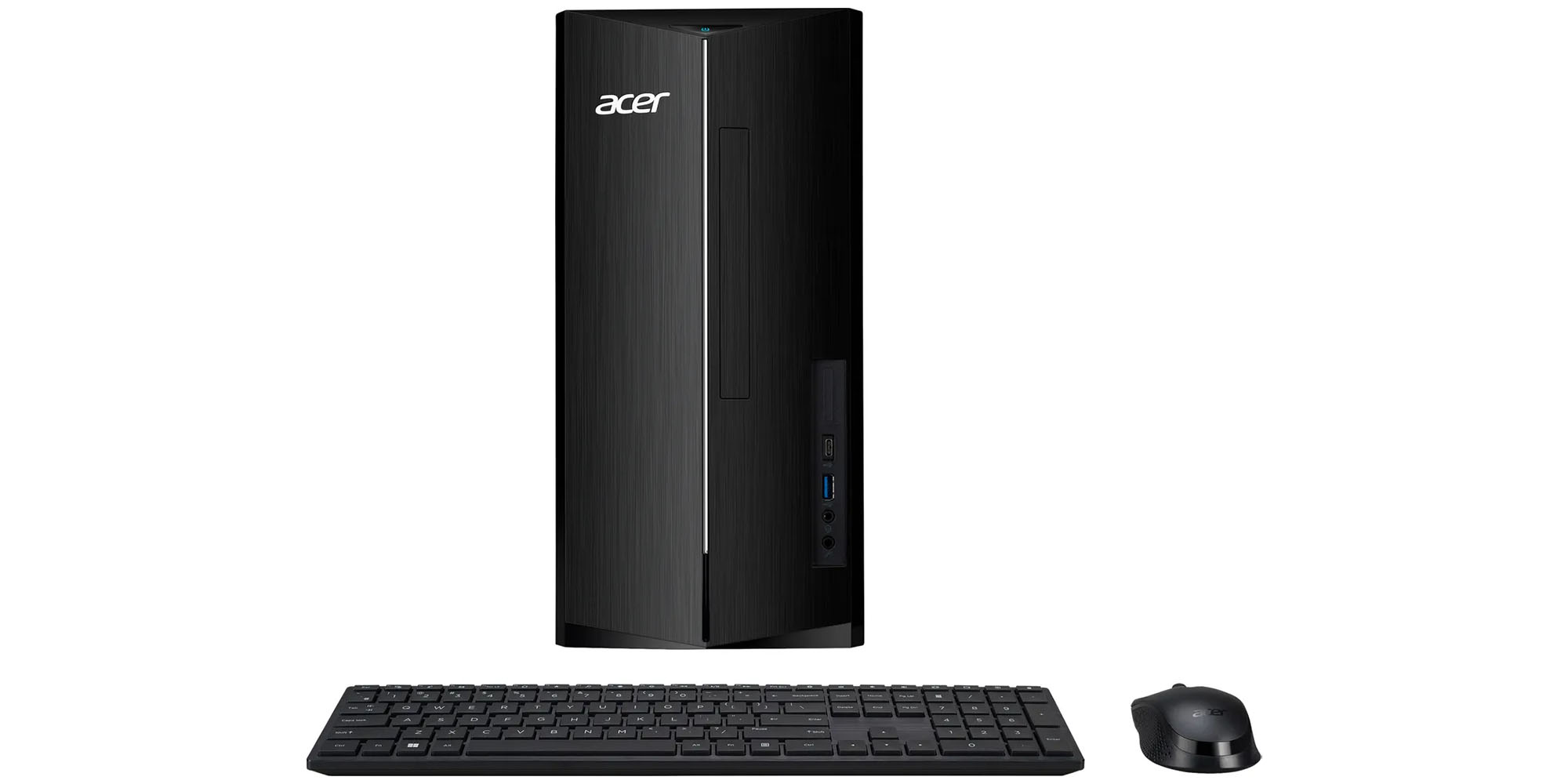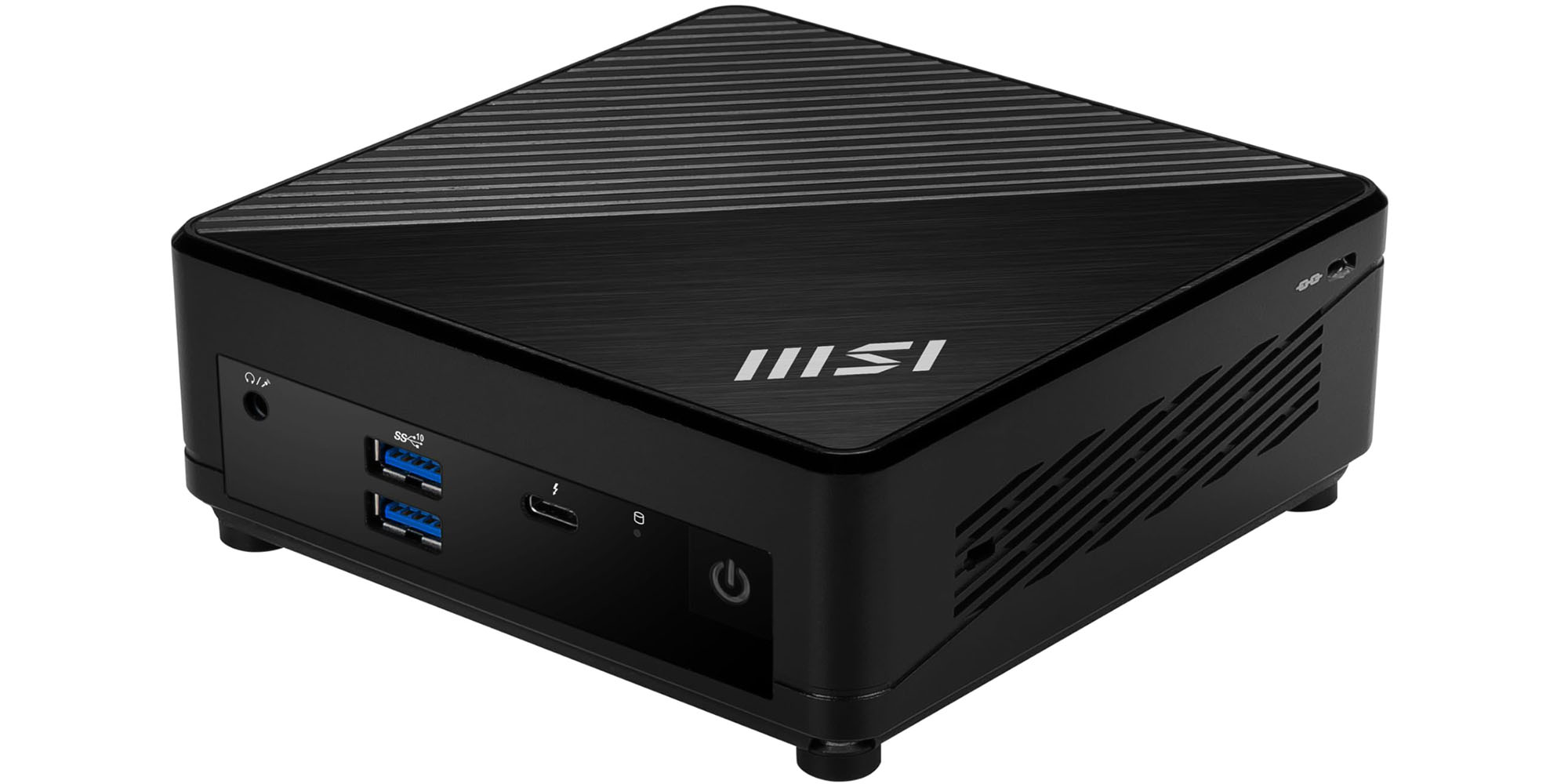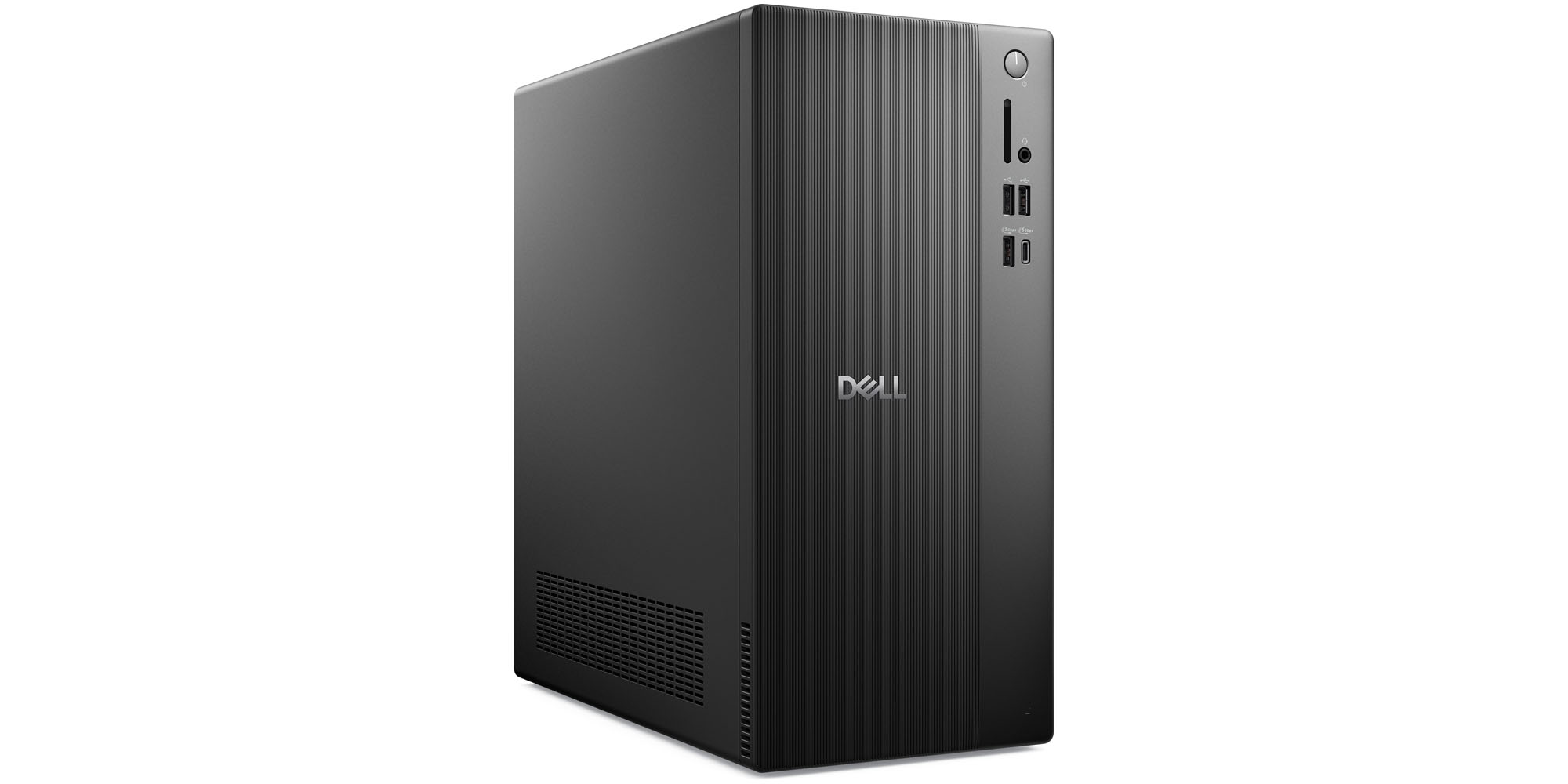
Get a year of super-useful advice
Solve your tech issues and get expert buying advice whenever you need it, all year for only £36.75 that’s 25% off.
Join Which? Tech SupportOffer ends 8th January 2026
By clicking a retailer link you consent to third-party cookies that track your onward journey. This enables W? to receive an affiliate commission if you make a purchase, which supports our mission to be the UK's consumer champion.

A decent desktop PC can make those daily computing tasks a breeze. No more drumming your fingers impatiently on the desk while you wait for your computer to sort itself out.
Make the wrong purchase and you could end up lumbered with a computer that's slow, has a poor-quality screen or is overpowered for your needs.
In this guide, we'll run through the specifications to look for when buying the best computer for your budget, including what to look for if you want to future-proof your PC. Plus we cover the pros and cons of desktops versus all-in-one PCs.

Solve your tech issues and get expert buying advice whenever you need it, all year for only £36.75 that’s 25% off.
Join Which? Tech SupportOffer ends 8th January 2026
You really don’t need to spend more than £600 to get a good desktop that will feel speedy when doing basic tasks such as checking your emails, doing online banking or browsing the web.
If you’re upgrading from a computer that's a decade old or more (and you really should – find out more about Windows 10 losing security support), you’ll be amazed at how fast cheap computers are nowadays.
All the advice here assumes you’re buying a new computer from a high street retailer or big online seller.
All of the above can easily be found for under £600 at major retailers. Go to where to buy a desktop PC if you're ready to buy.
Looking for more storage? An external drive will cost less, and you won't need to crack open your computer to install it. Read our reviews on the best external hard drives to pick a speedy one you can rely on
If you use a PC at home to work for multiple hours a day, or you can spend a little more, it’s worth investing in something that completely meets your needs and will serve you long into the future.
The specs we’ve outlined below will work for anybody who needs a computer for multitasking and will also be a great pick if you edit photos from time to time.
You can easily get all this for under £800. If you compromise on Ram, you could squeeze in under £650 – but avoid doing this unless you really have to. The more Ram, the better.

Fancy something more portable? Take a look at our expert advice on laptops.
We've consulted our experts to help you pick a good desktop PC or all-in-one that meets our minimum and recommended specs.

You'll need to BYO-monitor, but this budget-friendly PC meets our minimum specs without breaking the bank. It has an SD card reader, seven USB ports (six type-A, one type-C), plus a headphone jack. There are also two HDMI ports if you want to use two monitors.
It comes with Windows 11 Home pre-installed, as well as a keyboard and mouse.
Pick up this desktop below:
Need a new screen? See our expert pick of the best computer monitors

If you're looking for a tiny PC that you can easily tuck away or mount behind a monitor, this is a budget option that meets our minimum recommended specs. There are five USB ports (four type A and one type C), and you can run two monitors out of it.
There are also 'barebone' models available – these models are cheaper, but you need to install your own storage (hard drive or SSD), Ram, and operating system.
Compare prices on this mini PC below:

A step up in specs, but not too much in price – this Dell desktop features a whopping 20 cores, plus all our other recommended specs. It comes with Windows 11 Home pre-installed, but you'll need to supply your own mouse and keyboard.
There are four USB ports on the front and four on the back, an SD card reader, a headphone jack, plus one HDMI and one DisplayPort for dual-monitor use.
When buying, we'd recommend picking up the i7 model over the i5 model.
You can buy this PC direct from Dell, where you can tweak the configuration, too.

It's just a bit more expensive than our other models listed, but we think it's worth it for the specs you get. Otherwise, to keep it closer to the £700 mark, we'd suggest upgrading your storage to 1TB on the Lenovo website, and downgrading from Windows 11 Pro to Windows 11 Home.
There are three USB ports on the front, four on the back, and an HDMI for a monitor. Watch out though, as there's only one HDMI port you won't be able to connect a second screen unless you buy an adaptor (usually around £20).
You can pick up this desktop direct from Lenovo – we've seen it on offer for £689.
Keep your new PC protected from scammers – see our pick of the best antivirus, including the best free software
Below, we've picked a few of the most searched-for retailers to help you decide where to get a desktop PC.

As they use laptop components, mini PCs can be cheaper, smaller, and better tucked away than a traditional desktop. They're usually pretty well-specced, and many can be mounted behind a monitor.
One drawback? You won't have much space to upgrade or add any components. That said, they're usually quiet, and still manage to cram in several USB ports to boot. And you can always buy a USB hub to add more ports.
Another good option could also be picking up the very reasonably priced Mac mini. It's £599, and gets you a powerful M4 processor, 16GB Ram, and 256GB of SSD storage.
We put the Mac mini through our tough lab performance tests. For more information, including which retailers have the best prices, see our expert Mac mini review.
While it’s tempting to try to save money on a new computer, there are certain specifications that should be avoided. You’ll run into some of these when shopping on marketplace sites such as Amazon or eBay, but we’ve seen some models on big retailers that we wouldn’t touch with a barge pole.
This is the smallest amount of Ram any Windows 11 computer can have. But these days, it simply isn’t enough unless you’re conducting the very lightest of work on your device. The price difference between models with 4GB vs 8GB of Ram is normally small, and it’s worth paying more for this. 16GB is even better and will help futureproof your PC.
If you’re buying from an online marketplace or a discount site, check the age of the processor.
This is easy to do: simply copy the name of the processor and paste it into a search engine. Then click on the result that takes you to the processor maker’s official website. Within the data, you should get a launch year or a launch quarter (for example, Q4 22 would be the fourth quarter of 2022).
We’d say if the processor is more than six years old, it’s probably not worth buying the computer, even if it has Windows 11. If the listing doesn’t specify the exact processor, avoid it entirely.
While newer Pentium models aren’t awful, the price difference between them and a computer with a nice Core i3 is often under £50. As for Celerons and Atoms, however, these should be avoided as they’ll feel slow almost from the very start and feel even more lethargic as the years wear on.
Want more information about processors? See Intel processors explained
All-in-one computers are just that: it's the entire computer in one package, including the screen and speakers. However, manufacturers can compromise on the screen and speaker quality to keep costs down, plus a good desktop PC does have advantages over an all-in-one.
You'll find that they come in various shapes and sizes – from large bulky towers that need to sit under your desk, to more discreet and stylish models that sit neatly on your desk or can be tucked away.

Discover which models came out on top in our tough tests – see the best all-in-one computers.
Once you’ve bought your new desktop PC, you’ll need to pick up some accessories, depending on what was included in the box. These will include a keyboard, mouse and speakers, as well as a monitor.
While there are a wide selection of peripherals for all budgets, it’s important to consider your own requirements and not be tempted by flashy products that you won’t make use of.
Wired or wireless Most of us tend to use a keyboard in the same position, so it may not matter if you’re tethered by a wire. However, it’s always nice to cut out clutter, so one less wire can help keep your workstation tidy. A good wireless keyboard can be more expensive than a wired option, but gives a freedom that you won’t get with a wired one.
Ergonomic keyboards These are designed to feel more natural to type on, and can be a boon if you spend hours at a time typing. They tend to put less stress on the wrists and forearms, helping to cut down on chronic pain and repetitive strain. They take some getting used to, as the button placement is slightly different to a traditional keyboard. If possible, try one out before buying.
UK keyboards Keyboards have different layouts depending on the country they're intended for. This can be as small a change as the placement of the @ symbol, to the ordering of the letters. Check that the keyboard is UK standard, especially if you’re buying online.
Media keys For those using their PCs to play music and movies, a keyboard with dedicated media buttons can be extremely convenient. The inclusion of play, pause and volume buttons saves having to navigate to the program with the mouse.

Wired or wireless – A wireless mouse is arguably more useful if it’s being used with a laptop, but if you want a wire-free work surface, then they can be a great choice for a desktop, too. As the power drain on a wireless mouse is low, you’ll find that the battery life is excellent – one set should last for months. Some models can be recharged over USB instead of having to replace the batteries.
How many buttons – Most desktop mouse designs have two buttons and a scroll wheel. More advanced models have programmable buttons that let you add your most-used keys to the mouse.
Ergonomic mouse – You’ll be using your mouse a lot, so it’s important that it feels comfortable. Ergonomic mouse designs pay special attention to the contours of your hand, with 'natural' button placement. They’re not for everyone, and can feel a bit strange initially, but can be useful for some conditions, such as RSI.
Left-handed mouse – Most computer mouse designs will work with either hand, but this isn’t always the case, especially for specially designed ergonomic models. If you’re left-handed, make sure that the one you pick feels comfortable.

Solve your tech issues and get expert buying advice whenever you need it, all year for only £36.75 that’s 25% off.
Join Which? Tech SupportOffer ends 8th January 2026
Which? Tech Support can help you keep on top of your home tech. Our experts explain things clearly so you can resolve issues and feel more confident using your devices. This includes 1-2-1 buying advice on all the latest gadgets.
Get unlimited 1-to-1 expert support:
You can join Which? Tech Support.
Already a Tech Support member? For more help and 1-2-1 technical advice, including buying advice, go to our Tech Support online booking tool.